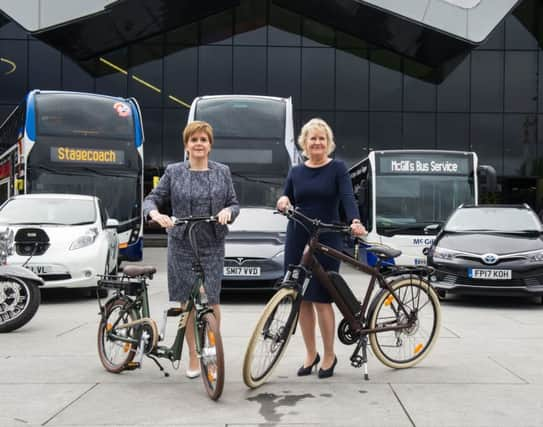Alastair Dalton: Tough vehicle restrictions better for all


I knew we’d thankfully be losing the din of fire engine sirens and other traffic noise, but I was surprised at how much less pollution there was around our new premises compared to the fumes in the urban canyon of St Vincent Street.
Unsurprisingly, that congested thoroughfare featured among the red lines on a map of Glasgow published by Scottish Government this week showing where nitrogen oxide limits are broken.
Advertisement
Hide AdAdvertisement
Hide AdIt was used to demonstrate the need for radical action to tackle the health damage caused by vehicle exhausts, which would go far further than past proposals for road tolls to cut congestion in Edinburgh.
Ministers want to introduce a first low emission zone (LEZ), probably in Glasgow, as early as the end of next year, from which vehicles with all but the cleanest engines could be banned.
Motoring groups estimated on Wednesday, when the measure was announced, that it could affect three-quarters of diesel cars and one in six petrol engines.
In fact, I was then reminded of research by Leeds University this year which showed that as many as half of all current cars potentially face being banned from Glasgow, Edinburgh, Aberdeen and Dundee, where LEZs are due to be established by 2020.
That’s more than 80,000 in each of the two largest cities alone - and some two-thirds of their taxis fleets are also non-compliant.
The Scottish Government is handing the difficult bits of its plans - which vehicles to ban, how soon to start penalising them and how much to fine them - to local authorities.
Nevertheless, it is a very bold move, as any restriction on cars is such an emotive subject when they are still by far and way still Scotland’s predominant way of getting about.
The LEZ introduction dates have put down a marker, even if the deadline for vehicles to become compliant may be somewhat later.
Advertisement
Hide AdAdvertisement
Hide AdA consultation on the scheme was launched a day after First Minister Nicola Sturgeon announced plans to “phase out the need for petrol and diesel vehicles by 2032” - eight years before the UK Government intends to ban the sale of new ones.
There’s certainly an element of one-upmanship between Holyrood and Westminster, but this could all be to the good if it accelerates emission reductions.
City centres should be for people, not vehicles. Virtually every motorist there is also a pedestrian, whether shopper, resident or visitor.
Glasgow would also be an ideal test bed, with both the largest rail network outside London and one of the UK’s lowest rates of car ownership.
This is significant because the Leeds University study also pointed out that the owners of non-compliant vehicles would be disproportionately among poorer people.
For taxis, ministers have indicated that grants for retro-fitting engines could be offered if responses to the consultation highlighted that as a priority.
Bus firms have spoken of the “frightening” impact of congestion on bus speeds, which have seen passengers deserting them in droves.
A Glasgow LEZ, cleared of traffic queues, could see buses regain the advantage. But operators should go one better than just using the cleanest diesel engines by showcasing the latest electric and zero-emission vehicles.